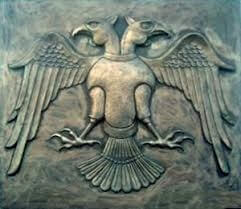Before the Ottoman Period
![göktürk.jpg]() Within the Turkish state administration experience exceeding one thousand years, documents concerning the state revenues and expenditures, registry order and accounting system as well as the audit of revenues and expenditures have undergone significant changes. Intoday’s system, the establishment of Divan-ı Muhasebat (Court of Accounts) is of particular importance, and while the Seljuks had a significant impact on the Ottoman state organisation, the previous Turkish states and the contemporary Turkish and Muslim states were influential on the state organisation of the Seljuks.
Within the Turkish state administration experience exceeding one thousand years, documents concerning the state revenues and expenditures, registry order and accounting system as well as the audit of revenues and expenditures have undergone significant changes. Intoday’s system, the establishment of Divan-ı Muhasebat (Court of Accounts) is of particular importance, and while the Seljuks had a significant impact on the Ottoman state organisation, the previous Turkish states and the contemporary Turkish and Muslim states were influential on the state organisation of the Seljuks.
![]() The Gokturk State (552-745): The importance of “Kuyudat Memuru (Records Officer)” is understood from the manuscripts dating back to this period as well as the Orkhon and Tonyukuk inscriptions.The Uygur State (911-1209): There are examples of tax registers, books kept by the traders as well as commercial papers dating back to this period.
The Gokturk State (552-745): The importance of “Kuyudat Memuru (Records Officer)” is understood from the manuscripts dating back to this period as well as the Orkhon and Tonyukuk inscriptions.The Uygur State (911-1209): There are examples of tax registers, books kept by the traders as well as commercial papers dating back to this period.
The Karahan State (840-1211): Kutad-gu Bilig of Yusuf Has Hacip and Divan-I Lügat-it Türk of Kaşgarlı Mahmut are important sources of information concerning the pre-Islamic state structure. The grand vizier and the courts affiliated to him formed the basis of the state structure in the Karahan State, and the control of the financial works was carried out by (Court of Control).
![]() The Ghaznavid State (963-1187): Out of five courts in the state organisation of the Ghaznavid State, Divan-ı İşraf was responsible for the control of the financial works.The Seljuk Empire (1040-1308): The information concerning the vizier at the head of the state organisation, the courts affiliated to the vizier as well as the books keptby these courts reveals that there was an organized state structure along with an advanced accounting system. Another important organ in the Seljuk state structure was Divan-ı İşraf, which controlled the revenues and expenditures of the state.
The Ghaznavid State (963-1187): Out of five courts in the state organisation of the Ghaznavid State, Divan-ı İşraf was responsible for the control of the financial works.The Seljuk Empire (1040-1308): The information concerning the vizier at the head of the state organisation, the courts affiliated to the vizier as well as the books keptby these courts reveals that there was an organized state structure along with an advanced accounting system. Another important organ in the Seljuk state structure was Divan-ı İşraf, which controlled the revenues and expenditures of the state.



